Kentucky Route Zero is a narrative adventure. It’s a road trip story. It’s a ghost story. It’s a character study. It’s avant-garde theater. It’s an examination of life in the United States after the Great Recession. It’s a love letter to classic PC text adventures. It’s Magical Realism. It’s Southern Gothic. It’s New Weird. It’s weird. Kentucky Route Zero is a lot of things and what you’re going to get out of it depends on how much you’re willing to put into it.
The first character I meet is Conway, a truck driver for an antique store. His final delivery before getting laid off is to an address on Dogwood Drive, a road not found on any map. Stopping for directions, he is pointed to the underground highway Kentucky Route Zero. But to say Kentucky Route Zero is about delivering antiques would be incorrect. That goal remains in the background of all five acts, but the plot disengages for long periods to explore the weird and impossible world of Kentucky, the highway underneath it, and the people who travel upon it, indulging the cliche that the story is about its journey so much more than its destination.
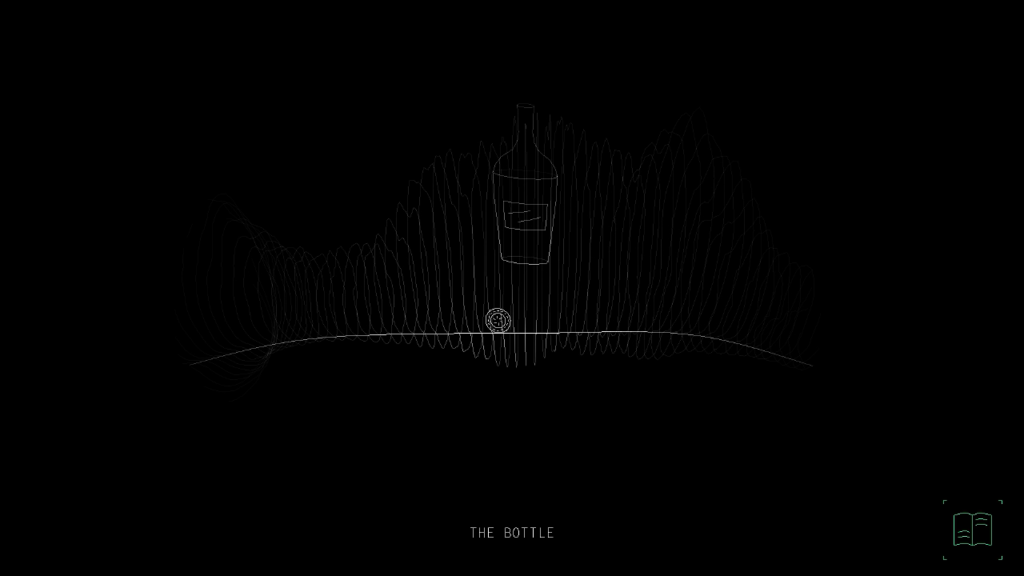
The Zero itself is a Möbius strip, an endlessly looping highway landmarked by colossal effigies: A lightning bolt, a television, a sandwich, a rocking chair. Following directions given by people who live near the Zero is the closest to real puzzles I encounter, circling until I reach the rocking chair, then turning to drive in the other direction where the Zero reveals new destinations. It reminds me of childhood vacations, trapped in the backseat of a minivan while my parents drove along the endless roads of the American midwest, cramped legs given reprieve by roadside tourist traps: A tree we could drive through, a pink-colored rock dressed up as the Big Rock Candy Mountain, or the biggest ball of twine in Minnesota. Kentucky Route Zero is a tumbling rabbit hole of Americana.
Conway is joined by an ever-expanding cast: His dog, an old hound in a straw hat; Shannon, an orphan who scrapes by repairing CRT televisions; Ezra, a boy in a suit whose best friend is a colossal eagle; Junebug and Johnny, traveling folk musicians (who are also androids). These characters have no stakes in Conway’s delivery. They latch onto the trip, enriching the world and the narrative through their presence in spite of their nebulous motivations for tagging along.
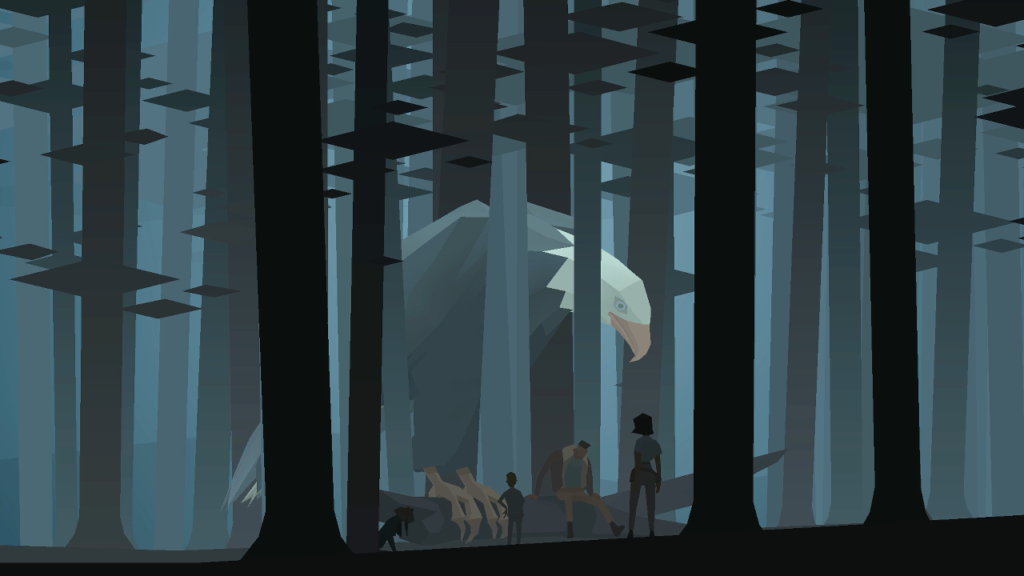
The group’s journey through the Zero leads them to many unusual destinations. There’s the Bureau of Reclaimed Spaces, a subterranean office building working to make futile sense of the Zero’s spatial chaos. There’s the Museum of Dwellings, a neighborhood-turned-museum whose residents still live in their homes-turned-exhibits. The Echo River Central Exchange, a train station converted into a telephone operating center with a river running through its middle. And many, many other mundane-fantastical places.
While speaking with a character or examining an object, Kentucky Route Zero becomes a text adventure. Written like the script for a play with copious stage directions, I could never quite tell what would be thrown at me next. Perspectives shift wildly and making a choice is never as straightforward as in the more mainstream Telltale-style adventures. A visit to one location finds the group’s actions described by security guards watching videotape footage years after their visit. A search for an office worker with information about Dogwood Drive leads into a crude recreation of the Colossal Cave Adventure, a recreation that resembles Kentucky Route Zero itself. Sometimes Conway is asked a question and I get to choose his response, then I get to choose the way the questioner reacts to that response. Kentucky Route Zero refuses to lock itself into a single perspective, timeframe, or narrative.
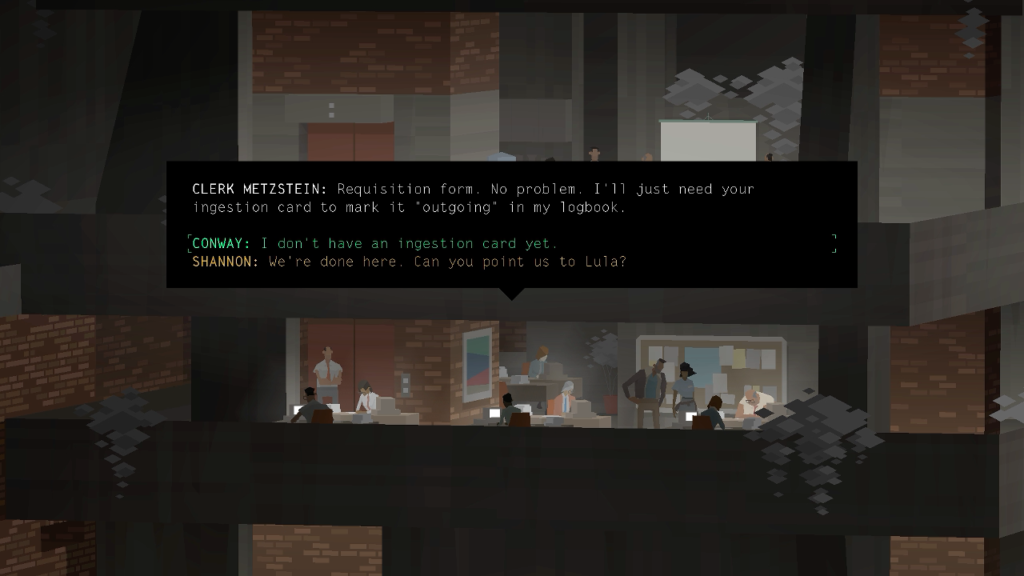
Following each of the five acts are Intermissions, side stories focused on characters and events that affect the Zero. One follows a group of friends touring an art installation. Another casts me as a background character in a one act play. A third lets me explore the bizarre automated hotline for the Bureau of Secret Tourism. If the main story in Kentucky Route Zero is eclectic, then its intermissions are mystifying, optional but unmissable.
The setting and events around the Zero create a spooky aura, but it is the masterful use of music that elevates key moments to haunting. Conway and his group are stalked by a roving band of musicians who appear silhouetted in the foreground, performing a bluegrass song. The soundtrack is otherwise ambient, so the minimalist use of live vocals and instrumentation sells the moments this phantom band arrives. But when Kentucky Route Zero wants to ratchet up the horror, it uses its ambient sound to maximum effect, foreshadowing its creepiest characters with an almost-inaudible hum that builds into a nightmarish buzz as the Zero’s most menacing creatures come closer and closer.
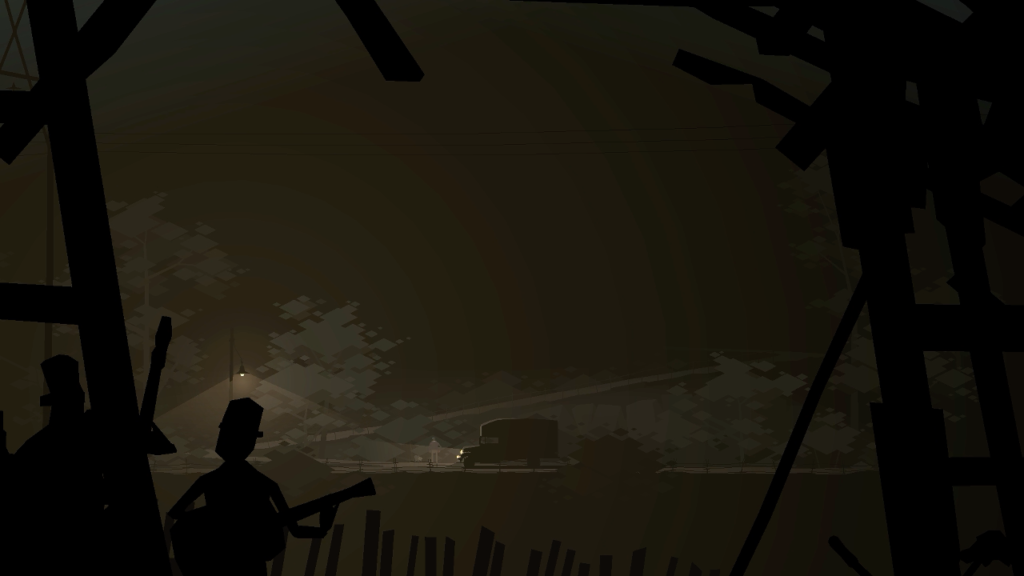
I’ve spent a long time describing Kentucky Route Zero in prosaic terms without focusing on the feelings I experienced playing it. I think that part of a review is pointless here; from what you’ve read so far, you already know if you will like it or not. If it sounds interesting, then you will enjoy Kentucky Route Zero. If it sounds dreadful and nonsensical, you will not enjoy Kentucky Route Zero. It’s a smart adventure, but not an accessible one, recognizing and aiming for its audience and hoping they will behave in kind. As to how I feel about it: I think I liked it, but how I will feel on a second playthrough may be different.
This is because Kentucky Route Zero is not about any one thing. The ending is indistinct, scenes and dialog may be missed but still affect characters, and other scenes may be irrelevant to the overall narrative. Grounded themes are touched upon through all the weirdness, including alcoholism, healthcare access, unemployment and underemployment, and other post-Great Recession issues afflicting the United States. But Kentucky Route Zero is uninterested in apportioning blame, proposing solutions, or imagining alternatives. These characters have to live their lives in this strange Kentucky, and their lives look much like our own.
What I get out of Kentucky Route Zero depends on how much I put into it. It offers no answers, but it does offer as much meaning as I allow myself to see. What meaning I infer from Conway’s simple delivery to an address that does not exist on a highway that has no entrance or exit is down to my own interpretation. How I feel about Kentucky Route Zero after my first playthrough is positive, but it will be different from the feelings I may have on a revisit as I discover new scenes and details. On that playthrough I may feel more negatively, unsatisfied with non-answers and put upon by inscrutable events. But then upon a third revisit I might feel positively again as I recognize more hope and compassion. Kentucky Route Zero is a reflective experience, giving back as much as it receives from the player. A positive mindset yields a positive experience, a negative mindset a negative one.
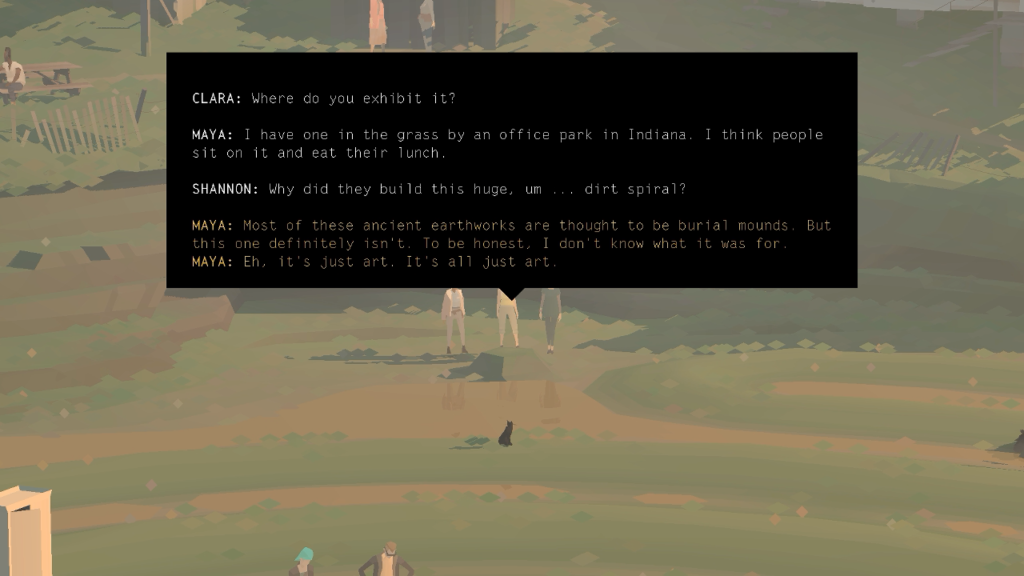
Released episodically over seven years, with an infamous four year gap between the fourth and fifth acts, Kentucky Route Zero is now complete. I appreciate a tight script and conclusive endings, so this isn’t quite what I look for in a satisfying narrative adventure. This scoffs at such notions, embracing the ethos that art just is. I’ve never played a videogame quite like it. If Kentucky Route Zero sounds like something you might appreciate, if not enjoy, then you should play it soon on any platform you can.